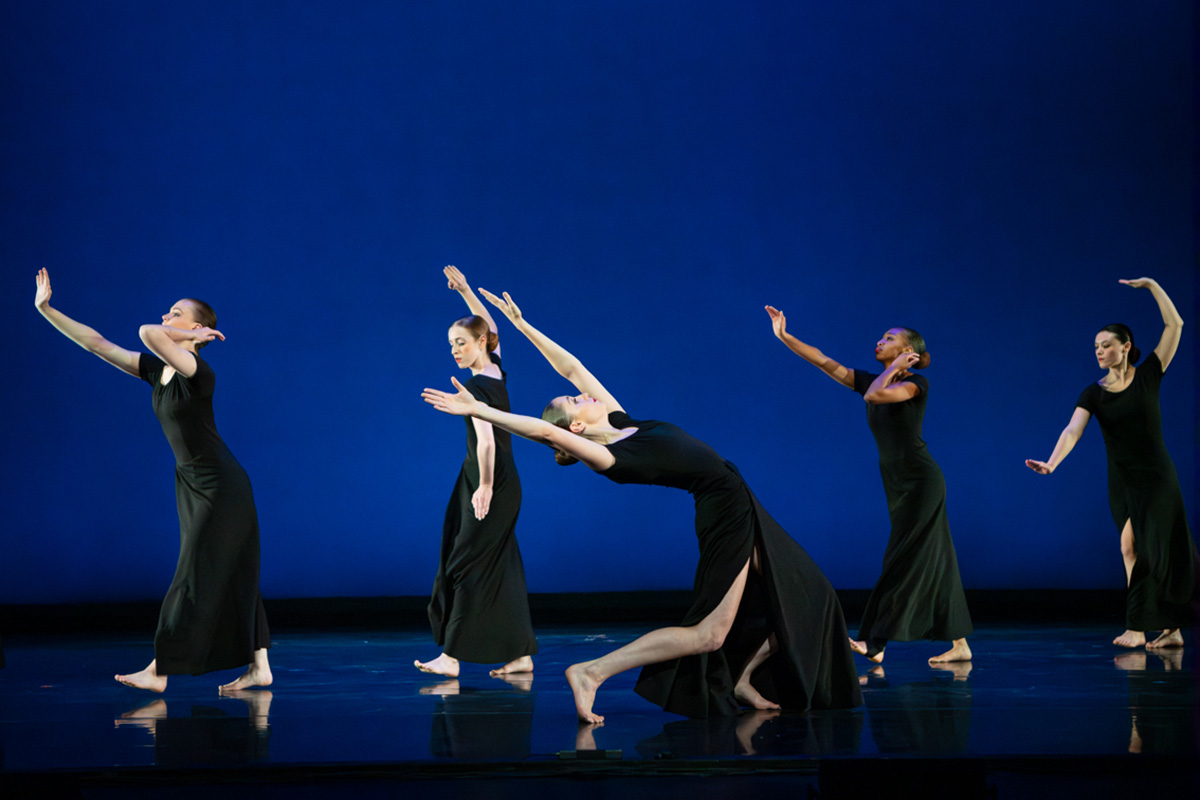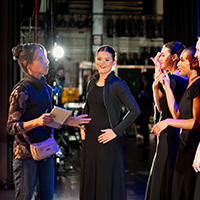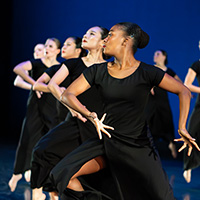
The October Dance performance by the University of Illinois Urbana-Champaign dance department will feature the historic Martha Graham work "Steps in the Street." It depicts the destruction and suffering in the wake of war. The performance is in conjunction with the upcoming 100th anniversary of the Martha Graham Company.
Photo by Natalie Fiol
CHAMPAIGN, Ill. - The dance department at the University of Illinois Urbana-Champaign will stage a signature work by the influential dancer and choreographer Martha Graham at its October Dance performance.
"Steps in the Street: Devastation - Homelessness - Exile" is part of a larger work, "Chronicle," that Graham created in 1936. It depicts the physical and spiritual destruction that war leaves in its wake and reflects the reality of human suffering. This work is being presented in coordination with the 100th anniversary celebration of the Martha Graham Company, culminating in 2026, the anniversary year.
October Dance is Oct. 12-14 at 7:30 p.m. at Krannert Center for the Performing Arts. A livestreamed performance is available Oct. 11.

Elizabeth Auclair, left, of the Martha Graham Company talks with the dancers performing "Steps in the Street" during a rehearsal break. Auclair has been an artist-in-residence with the U. of I. dance department since early September.
Photo by Natalie Fiol
Elizabeth Auclair has been part of the Martha Graham Company for 30 years, including 16 years as a principal dancer. She's been an artist-in-residence with the dance department since early September, working with students to stage "Steps in the Street," as well as teaching classes on the Graham technique and on the creative process.
"This work is, sadly, always relevant," Auclair said. "It's an arc most people can identify with in their own lives in many kinds of circumstances. Not necessarily just with war but in dealing with the aftermath of a devastating event and the recovery and resilience you have to come up with to come back from it."
"Chronicle" originally had five sections but two have been lost, Auclair said. The other three have been resurrected and are well-known works that are performed often, she said.
The first section, "Spectre - 1914," is a solo that evokes a sense of an oncoming war. "Steps in the Street" deals with its aftermath, and "Prelude to Action" emphasizes resilience and the importance of community in the collective action needed to survive. Auclair was in the cast of the original reconstruction of "Steps in the Street" in 1989.
The dance piece involves geographic patterns, with dancers moving in unison as a group in parts, and other dancers moving in counterpoint. Graham pioneered a technique known for angular, percussive, sharp body movements and positions, which are apparent in this work, Auclair said.

Dance student Kennedy Wilson, foreground, performs with other dancers in a rehearsal for "Steps in the Street."
Photo by Natalie Fiol
"Part of her brilliance was finding movements that really reflected an inner state of being. It brings a certain feeling of emptiness and loneliness," she said.
Graham was known for the "Martha Graham contraction" - a movement that she used in most of her dances in which the core of the body is hollowed out into a deep curve. Auclair said "Steps in the Street" and the body position are quite difficult to master.
"It's a really hard dance to perform. Physically, the Martha Graham contraction is a very strenuous thing to do. Her technique is a training ground to learn how to get the body to do that over time. It's a lot to ask of dancers in a short amount of time," she said. "The students are dedicated, interested and working very arduously and passionately."
Some of the students dancing in "Steps in the Street" said that learning the Graham technique has helped them do more physically and also find new ways to communicate the emotions of the work.
"It is impossible not to feel connected to the past dancers and the choreographer, Martha Graham, when performing this piece," said Brynn Maxwell, a dance student and one of the performers. "The movement and the emotional discussion go far beyond the stage I'm on. Something I like about the Graham technique is that there is always a way for you to offer more in the movement. I constantly discover new things my body can do."
Sojung Lim, a graduate student in dance, said that learning the Graham technique has allowed her to trust and refine the expressions of her body.
"I learned to appreciate the specificities of the technique, particularly when it comes to breathing while contracting and extending the body. It's not just about physical performance or action. The technique feels like something emanating from a human sensation, such as patience, persistence and will," Lim said.
Auclair and dance professor Betsy Brandt will participate in a panel discussion, moderated by Sara Hook, the head of the U. of I. dance department, on Oct. 12 at 6 p.m. at Spurlock Museum of World Cultures. The event is free and open to the public.
Other works to be presented at October Dance:
Dance student Nawal Assougdam's "Atay?" explores community and hospitality in Moroccan culture through the daily ritual of pouring and sharing tea (atay). Her work investigates her interactions with her culture, and it features music and movement of the Amazigh Sous regions of Morocco.
Dance professor Cynthia Oliver's new work "Summon. Sow. Reap" is concerned with rhythm, and the accompanying music by James Mauck, Mark White and Jason Finkelman includes beats, breaks, drum hits and rim shots. Oliver said she is interested in strength, power, community and the ways our differences can join together and become greater than the sum of our parts.
"Bells for Us" is a new work by Anna Sapozhnikov, the assistant head of program administration and engagement, created for the dance department's First Year Repertory Company. The piece originally focused on bells and their place in our daily lives, then expanded to include sounds that the dancers associate with an intense memory.
Dance professor Alexandra Barbier describes her piece "yESteRDaZe*" as a playful, nostalgic, audience-interactive performance that recalls some of her favorite memories from playgrounds, slumber parties and middle school dances. She uses pop culture references from 1996-2000 and described the dance as a millennial love letter to the turn of the 21st century, but relatable to all generations.






